#U.S. Department of Agriculture – Natural Resources Conservation Service
Explore tagged Tumblr posts
Text
NTC and Community College Alliance to lead National Ag Education Consortium
This $9 million, four-year program aims to connect more students to agriculture career pathways.
WAUSAU – Northcentral Technical College, a founding member of the Community College Alliance for Agriculture Advancement, or C2A3, announced today a ground-breaking initiative with U.S. Department of Agriculture – Natural Resources Conservation Service to create a national agriculture center for two-year colleges. This $9 million, four-year program aims to connect more students to agriculture…
#Astrid Martinez#C2A3#Community College Alliance for Agriculture Advancement#Jeannie Worden#Northcentral Technical College#NTC#U.S. Department of Agriculture – Natural Resources Conservation Service#USDA’s Natural Resources Conservation Service
0 notes
Text
Excerpt from this story from Inside Climate News:
Sheldon Auto Wrecking is a local institution in southwestern Wisconsin’s Vernon County. It’s tucked in a lush valley just downstream of a 50-foot earthen dam, locally known as “Maple Dale.”
The salvage yard, which buys used vehicles and farm machinery in this rural area to sell for parts, has been in business for nearly 70 years. For most of those years, the dam—less than a half-mile up the road—has protected its yard of hundreds of old cars and broken-down equipment from frequent and sometimes severe flooding in the area.
The dam “was put in place for a reason,” said owner Greg Sheldon.
But it might soon go away.
Maple Dale is one of thousands of dams constructed by the U.S. Department of Agriculture’s Natural Resources Conservation Service, beginning in the mid-20th century, for the purposes of flood control.
In 2018, five similar dams in the region failed during a massive rainstorm that caused property damage in the tens of millions of dollars. A study determined that several other dams in the watersheds hit hardest by the flood, including Maple Dale, were also vulnerable to failure but would be too expensive to replace.
As a result, local officials are voting on whether to dismantle the dams by cutting large notches in them, allowing the water to flow again, in a process called decommissioning. Experts say it could be the most dams ever decommissioned in a single county in the U.S.
And it could be a harbinger for other communities.
Although the county may be the first to take on a project of this size, it’s unlikely to be the last. Dams across the country are aging, and also facing pressures from urban sprawl and intensifying floods wrought by climate change. The price tag to fix what’s broken, though, is estimated in the hundreds of billions of dollars, meaning dam owners could face hard questions about what to do with them.
In Viroqua, it’s also leaving the people who own property below the dams uneasy about what comes next—including Sheldon.
“To come along and just rip a big hole out and let the water run is a mistake,” he said.
Removal Plan Controversial
The southwest Wisconsin dams are among nearly 12,000 that have been built under the USDA’s Watershed Programs. Generally smaller and set in rural agricultural areas, they’re mostly clustered from the center of the country eastward. Oklahoma has the most, followed by Texas, Iowa and Missouri.
The idea for the watershed program dams arose during the Dust Bowl in the 1930s. Because there was little vegetation left on the landscape to soak up rain when it fell, there were several severe floods during that time, prompting federal agencies to look for a way to control the water.
To get the dams built, the Natural Resources Conservation Service entered into a contract with a local sponsor, such as a county. NRCS covered all the construction costs and helped the sponsor with inspections and repairs. In return, the sponsor maintained the dam for a certain number of years—under most contracts, 50—to ensure taxpayers got their money’s worth out of the project.
Since many of the dams were built in the 1960s and 1970s, said Steve Becker, Wisconsin’s state conservation engineer for NRCS, their contracts are now up.
“We pretty much told the counties, ‘You have full autonomy to do whatever you want with those dams,” Becker said. “You can maintain, you can rehab, you can repair. It doesn’t really matter. We’re out.”
12 notes
·
View notes
Text



















The United States National Park Service was created on August 25, 1916.
National Park Service Founders Day
The National Park Service was created when President Woodrow Wilson signed the Organic Act on August 25, 1916. The anniversary of its creation is known as National Park Service Founders Day, or simply as Founders Day, and is celebrated by all national parks. They offer free admission and host special programs, both in-person and virtual. The celebration happens to take place during National Parks Month.
According to the Organic Act, "the Service thus established shall promote and regulate the use of the Federal areas known as national parks, monuments and reservations" and their "purpose is to conserve the scenery and the natural and historic objects and the wild life therein and to provide for the enjoyment of the same in such manner and by such means as will leave them unimpaired for the enjoyment of future generations." This is not too far removed from the National Park Service's current mission statement: "The National Park Service preserves unimpaired the natural and cultural resources and values of the National Park System for the enjoyment, education, and inspiration of this and future generations. The Park Service cooperates with partners to extend the benefits of natural and cultural resource conservation and outdoor recreation throughout this country and the world." The National Park Service is a bureau in the U.S. Department of the Interior. It is led by a director who is nominated by the president and confirmed by the U.S. Senate.
The first national park was Yellowstone National Park. It was established on March 1, 1872, with the Yellowstone Act, "as a public park or pleasuring-ground for the benefit and enjoyment of the people." Yellowstone was administered by the U.S. Department of the Interior, as were other early parks and some monuments, while other monuments and historical areas were administered by the War Department and the Forest Service of the Department of Agriculture. When the National Park Service was created on today's date in 1916, it managed 35 parks and monuments. With an executive order in 1933, President Franklin Roosevelt brought 56 national monuments and military sites administered by the War Department and the Forest Service into the National Park Service. This move brought areas of historical, scenic, and scientific importance together. For a new park to be created, there must be an act of Congress. But, on account of the Antiquities Act of 1906, the president can proclaim national monuments on lands under federal jurisdiction.
By the 2020s, there were over 420 national park sites, or units, in the National Park System, covering over 85 million acres of land, located in every state, in the District of Columbia, and in a number of US territories. Collectively they are referred to as parks, although there are many naming designations, such as National Battlefields, National Military Parks, and National Historic Sites. There are also "related areas"—these are not managed by the National Park Service, but "are linked in importance and purpose to places managed directly by the National Park Service by preserving important segments of the nation's natural and cultural heritage." Examples are National Heritage Areas, Affiliated Areas, and trails in the National Trails System. The National Park Service employs about 20,000 people, and has almost 300,000 volunteers! With such an expanse of land in its jurisdiction and so many people involved in the land's preservation, it's apparent that the National Park Service's original goal of conservation for future generations is still being met, and this is celebrated today with National Park Service Founders Day!
How to Observe National Park Service Founders Day
There are numerous ways you could celebrate the day:
Visit a national park or other location managed by the National Park System. Remember, there is free admission today! If you can't visit in person, you could do so virtually.
Get the NPS app.
Check out the National Park Service's "Games and Challenges."
Read a book about the national parks.
Watch National Parks: America's Best Idea and read its companion book.
Learn about the past directors of the National Park Service.
Volunteer or work for the National Park Service.
Follow the National Park Service's social media accounts.
Source
#Glacier National Park#Yellowstone National Park#Death Valley National Park#Skagway Historic District#United States National Park Service#25 August 1916#anniversary#US history#tourist attraction#original photography#USA#National Park Service Founders Day#Arches National Park#Yosemite National Park#Canyonlands National Park#Mesa Verde National Park#Colorado National Monument#Dinosaur National Monument#Petrified Forest National Park#Acadia National Park#Everglades National Park#Grand Canyon National Park#Painted Desert#White Sands National Park#Gettysburg National Military Park#Mammoth Cave National Park#Olympic National Park#Montezuma Castle National Monument
3 notes
·
View notes
Text
1. The ACC will train and employ 20,000 people in climate and clean energy jobs
The ACC will mobilize a new, diverse generation by training them in skills crucial to combating climate change—everything from installing solar panels to improving communities' natural disaster resilience to restoring critical ecosystems. And with a shortage of skilled clean energy workers, the ACC couldn’t come at a better time. We need more tradespeople, installing things like electric vehicle chargers and heat pumps, to decarbonize our economy.
There’s an emphasis on building career pathways, not just jobs. To achieve this, the White House will partner with unions and is committed to providing members with the hard skills and transferable credentials that will allow them to find good-paying jobs or seek further training through apprenticeships and trade schools after their service. This includes potentially expanding access to scholarships and awards that would support post-secondary education and training or reduce student debt and streamlined pathways into civil service. The best part? No prior experience is required for most positions, and very few will require college degrees.
2. The ACC prioritizes equity and environmental justice
While the ACC draws upon the ambition of The New Deal and President Franklin Delano Roosevelt’s Civilian Conservation Corps, it also learns from its fundamental flaws.
FDR’s Corps lacked diversity, perpetuated white supremacy, and almost entirely excluded women, but Biden’s Corps puts equity and environmental justice at its core. It prioritizes communities traditionally left behind, including energy communities, whose lives have been dominated and shaped by the fossil fuel industry, and disadvantaged communities, who disproportionately suffer from a combination of environmental, economic, and health burdens.
The ACC follows the same targets of the administration’s Justice40 goal, where 40 percent of the benefits must be directed towards disadvantaged communities.
3. The ACC employs an all-of-government approach
The ACC is built on a hub-and-spoke model with AmeriCorps at the center. The White House is launching a dedicated ACC recruitment website, where participants can learn about and apply for opportunities in their communities, and across the country, that span all spheres of the clean energy economy.
The administration is partnering AmeriCorps with at least five other federal agencies (Department of Labor, Department of the Interior, U.S. Department of Agriculture, National Oceanic and Atmospheric Administration, and Department of Energy) to pool resources, coordinate recruitment, and fund corps members to work on specific projects that address the climate crisis.
Additionally, the administration will partner with at least 10 states. California, Colorado, Maine, Michigan, and Washington have already launched similar programs, while five more (Arizona, Maryland, Minnesota, North Carolina, and Utah) are creating their own Corps.
6 notes
·
View notes
Photo

April 05, 1933-- FDR creates Civilian Conservation Corps
"On April 5, 1933, President Franklin D. Roosevelt establishes the Civilian Conservation Corps (CCC), an innovative federally funded organization that put tens of thousands of Americans to work during the Great Depression on projects with environmental benefits.
In 1932, FDR took America’s political helm during the country’s worst economic crisis, declaring a “government worthy of its name must make a fitting response” to the suffering of the unemployed. He implemented the CCC a little over one month into his presidency as part of his administration’s “New Deal” plan for social and economic progress. The CCC reflected FDR’s deep commitment to environmental conservation. He waxed poetic when lobbying for the its passage, declaring “the forests are the lungs of our land [which] purify our air and give fresh strength to our people.”
The CCC, also known as “Roosevelt’s Tree Army,” was open to unemployed, unmarried U.S. male citizens between the ages of 18 and 26. All recruits had to be healthy and were expected to perform hard physical labor. Blacks were placed in de-facto segregated camps, although administrators denied the practice of discrimination. Enlistment in the program was for a minimum of 6 months; many re-enlisted after their first term. Participants were paid $30 a month and often given supplemental basic and vocational education while they served. Under the guidance of the Departments of the Interior and Agriculture, CCC employees fought forest fires, planted trees, cleared and maintained access roads, re-seeded grazing lands and implemented soil-erosion controls. They built wildlife refuges, fish-rearing facilities, water storage basins and animal shelters. To encourage citizens to get out and enjoy America’s natural resources, FDR authorized the CCC to build bridges and campground facilities. From 1933 to 1942, the CCC employed over 3 million men.
Of Roosevelt’s many New Deal policies, the CCC is considered by many to be one of the most enduring and successful. It provided the model for future state and federal conservation programs. In 1942, Congress discontinued appropriations for the CCC, diverting the desperately needed funds to the effort to win World War II."
- History.com
This Civilian Conservation Corps Ring from 1940 can be found in the online collection of the National Museum of Forest Service History.
#this day in history#ccc#Civilian Conservation Corps#US Forest Service#Forest Service#Museums#history museums#PastPerfect#PastPerfect Online#Online Museum Collections#Montana Museums#US Museums#history#US History
6 notes
·
View notes
Text
The Gulf of Mexico is critical to the Midwest and East Coast... Because the jet stream runs from west to east but that affects more of the temperature of America. The Gulf of Mexico feeds all the way up through Canada and into the Arctic. It supplies us with oxygen and all forms of moisture. And this is a serious problem because oxygen levels have come down in the Gulf of Mexico, the water and this supplies lots of oxygen into America, Canada and the Arctic. And the smog that is growing in Arizona and California is trapping moisture below it, preventing that from going towards the Midwest and East Coast as well from the Pacific. This is why we have the growing desert and this is why we have many more droughts in California and in effect, Mexico as well. So the Pacific is the most polluted ocean. So America is getting screwed. The lamp that goes the other way. That's more about the British Annette. The jet stream goes through America towards Britain and the golf moves moisture up and through and the Atlantic does bring it up. But it's from the South outside the Gulf and the Southern states. And then the Gulf and the Southern states, the moisture moves upward. To the top of the world... So America is having serious issues because of the pollution in the Gulf and the Pacific.
National Oceanic and Atmospheric Administration (.gov)
https://www.noaa.gov › news-release
Larger-than-average Gulf of Mexico 'dead zone' measured
Aug 3, 2021 — Exposure to hypoxic waters has been found to alter fish diets, growth rates, reproduction offsite link, habitat use,
So because of smog building up in the West, you and the Pacific being so polluted Moisture isn't rising and this is why the California mountains are not experiencing enough snow.
The Guardian
https://www.theguardian.com › feb
Temperature inversions are trap for moisture and pollution
Feb 29, 2016 — During the day, a lid of warm clear air traps cloud, mist and moisture in the cool air below
Why does smog get trapped?
The warmer air rises and acts as a lid trapping the colder air close to the ground. Pollution, including that from road traffic is also trapped, so the air layer closest to the ground becomes more and more polluted. This continues until the prevailing meteorological conditions change.Jun 29, 2016
https://www.eea.europa.eu › view
Temperature inversion traps pollution at ground level
It's critical that these mountains get very heavy snowfalls because the water runs down stream and it takes care of all the vegetation and wildlife and it also takes care of all the aquatic life... It also allows for good summer rains.As it evaporates it turns into clouds and those clouds bring rain... So the monsoons had been getting less and that means things have been getting dryer...
In 2024, California's mountains have experienced record low snow, with the Sierra Nevada experiencing 52% of average snowpack in the second snow survey of the year. This is less than half of the snow the region typically receives by this point in the winter, and has raised concerns of a "snow drought".
Washington Post
Mountains in the West have a lot less snow than they should right ...
Jan 5, 2024 — Even with a small uptick in recent days, the California region SWE is less than half the normal value for the date, according to the U.S. Agriculture Department's Natural Resources Conservation Service. The SWE of 3.2 inches on Jan. 4 compares to the normal 7.2 inches. In what became a historically snowy winter, last year the SWE was 11.2 inches on the same date.
earthobservatory.nasa.gov
A “Surprisingly Average” Year for Sierra Snowpack
Apr 11, 2024 — After more than a decade of either unusually wet or unusually dry years, snowpack in the Sierra Nevada was close to normal in 2024. Snowpack throughout the Sierra range was 110 percent of average on April 1, 2024, according to the California Department of Water Resources (DWR).
San Francisco Chronicle
Here's where California's snowpack stands with winter ...
Jan 30, 2024 — California has received barely half of the snow it typically gets by this point in winter, reinforcing concerns of a “snow drought” as the wet season moves into its second half and time grows shorter to produce cold, powder-producing storms. State water officials reported 52% of average snowpack across California's high country in the second snow survey of the year on Tuesday, a day before a major storm was forecast to bear down on the state and at least slightly improve prospects for the season, particularly in the southern Sierra Nevada. Another big storm is expected to arrive Sunday.
The 2023-2024 winter has been marked by a periodic warming of the eastern tropical Pacific, known as El Niño, which has torqued winter weather across much of the Western Hemisphere. Many of California's storms this year have been warm, with rain falling instead of snow.
However, snowpack throughout the Sierra range was 110 percent of average on April 1, 2024. Angelique Fabbiani-Leon, California's state hydrometeorologist, said that several additional storms within March would help, and that the region would be up to 100% of average by April 1.
At the Central Sierra Snow Lab at Donner Pass, Calif., October through December snowfall in 2023 was the fourth-lowest since 1971. “No horrible records just yet, but we are certainly scraping the bottom of the barrel at this point,” Andrew Schwartz, lead scientist and manager of the lab, said in an interview.Jan 5, 2024
https://www.washingtonpost.com › ...
Mountains in the West have a lot less snow than they should right
So this is causing things to have hotter and hotter temperatures in Arizona Nevada. It's affecting Utah and many other areas growing the desert region because of the pollution in the Pacific Ocean. And then the smog in California, preventing water from getting warmer and rising. As you see, the inversion traps this air below. And it prevents the water vapors from coming up... So and it's causing a problem as well.In arizona for the water to move westward the smog in scottsdale tempe area again is trapping the water in the valley and it's causing the valley to get hotter and hotter.... And this also trapped pollution.And this makes air quality worse in Arizona, California.Because it traps all the pollution below.It so literally they're killing themselves... Yes, they're killing themselves because it traps and prevents rainfall from coming in and washing it out. It prevents a snowfall from happening and cleansing. The sky and the traps all that pollution towards ground level. The smog prevents the pollution from getting the sunlight and getting evoperate. It and so literally, California's opportunities of poisoning themselves and people in Arizona are poisoning themselves.....
The National Weather Service said the monsoon season this year in the arid Southwest dropped only 0.15 inches (. 38 centimeters) of rainfall from June 15 to September 30. That's the driest since the agency began keeping records in 1895. The previous mark was 0.35 inches in 1924.Oct 1, 2023
https://www.voanews.com › phoen...
Phoenix, Arizona, Has Driest Monsoon Season Since 1895
Yes, monsoon rainfall has decreased in Arizona in 2023, with Sky Harbor International Airport receiving 0.15 inches of rain from June 15 to September 30, which is the driest monsoon season since 1895. This is a decrease from 2022, when 10.63 inches of rain fell, and 2021, when 10.90 inches fell.
VOA News
Phoenix, Arizona, Has Driest Monsoon Season Since 1895
Oct 1, 2023 — October 01, 2023 7:20 PM. A jet takes flight from Sky Harbor International Airport as the sun sets over downtown Phoenix, Arizona, July 12, 2023. Phoenix, Arizona — After a summer of extreme heat, Arizona's most populous city is in the record books again. This time Phoenix is notching a record for dry heat. The National Weather Service said the monsoon season this year in the arid Southwest dropped only 0.15 inches (. 38 centimeters) of rainfall from June 15 to September 30. That's the driest since the agency began keeping records in 1895. The previous mark was 0.35 inches in 1924.
The Guardian
Phoenix has driest monsoon season since record-keeping ...
Oct 2, 2023 — Monsoon 2023 was officially the driest on record in Phoenix with a grand total of 0.15" of rainfall recorded at Sky Harbor International Airport. The average during the monsoon season is typically 2.43". # azwx pic.twitter.com/3bdC728IK3. — NWS Phoenix (@NWSPhoenix) October 1, 2023. Nevada has struggled with drought conditions since 2020. New Mexico, the fourth driest state in the US with an average annual rainfall of about 14in (35.5cm) per year, also has been affected by the drought in recent years. Phoenix this summer experienced the hottest July and the second-hottest August.
AZCentral
Arizona's 2023 monsoon driest on record for Phoenix - AZCentral
Sep 29, 2023 — At the high country's airport, 2023's accumulation of 4.24 inches puts it well below its average of 7.68. The year was also dwarfed in comparison to 2022 (10.63 inches) and 2021 (10.90 inches). In Phoenix, Sky Harbor caught an abysmal 0.15 of an inch of rain this season, easily placing it as the driest on record, pushing out 1924 at 0.35 of an inch. Usually, Sky Harbor gets around 2.43 inches of rain during the season. When compared even to 2020's "Nonsoon," a total that both Tucson and Flagstaff handily exceeded, Phoenix's 2023 comes nowhere close. Sky Harbor got exactly 1 inch of rain that year, according to NWS statistics.
The 2023 monsoon season was also the 20th-warmest on record, with Phoenix experiencing its hottest July and second-hottest August. The lack of rainfall has been driving the heat higher, as when the sun shines on dry ground, more of its energy is converted into heat.
Most of the southwestern U.S. experienced drier than normal monsoon conditions in 2023, especially across central and southern Arizona into New Mexico and west Texas, with most areas receiving 50% or less of normal precipitation. However, precipitation in the north and west offset the drier areas.
Precipitation totals vary widely each monsoon season and within each season, amounts change quite dramatically from city to city. For example, during the 2013 monsoon season, Flagstaff recorded well above normal monsoon season total precipitation, while Prescott was almost two inches below normal.
So literally these people on the west coast are killing themselves... But in every city they don't understand this pollution is trapping pollution below it causing poorer and poorer air quality...
Inversion is a weather phenomenon where warmer air at higher altitudes traps colder air — and pollution — below it, according to the Utah Department of Environmental Quality.
The Gulf of Mexico's moisture can cause snowfall in Canada through low-pressure systems that move east or northeast. These storms use moisture from the Gulf of Mexico and cold air from Canada to create heavy snow and sometimes blizzards. The moisture from the Gulf of Mexico and tropics also helps the Prairies experience fluffier snow and heavier snowfall rates in the spring.
NOAA National Severe Storms Laboratory
Severe Weather 101: Winter Weather Forecasting
These storms move east or northeast and use both the southward plunge of cold air from Canada and the northward flow of moisture from the Gulf of Mexico to produce heavy snow and sometimes blizzard conditions. Other storms affecting the Midwest and plains intensify in the lee of the Canadian Rockies and move southeast.
The Weather Network
How the tropics help produce big springtime snows on the Prairies
Apr 23, 2022 — MUST SEE: Spring weather words you need to know. There's still plenty of cold air locked over Canada deep into March and April, even as classic springtime storms bring comfortable warmth and rowdy thunderstorms south of the border. These low-pressure systems cross the border with plenty of atmospheric moisture pumped straight from the Gulf of Mexico and tropics to the south, providing the juice needed for fluffier snow and heavier snowfall rates across the Prairies, both of which contribute to deeper accumulations. The increased moisture doesn't just increase the tenacity of blizzards on the eastern Prairies.
The Gulf Stream, also known as the Atlantic meridional overturning circulation (AMOC), is an ocean conveyor belt that moves heat, nutrients, and water from the tropics to the North Atlantic. This is responsible for the relatively mild temperatures in European countries that are roughly on the same latitude as Canada.
CBC
https://www.cbc.ca › m_blog › ten...
10 Strange Facts About Canada's Climate - The Wild Canadian Year
Through blistering cold winters to hot muggy summers; torrential rain, blinding snowstorms, deadly tornados and scorching drought
So as you see it's causing serious issues are pollution.... It is destroying the united states.....
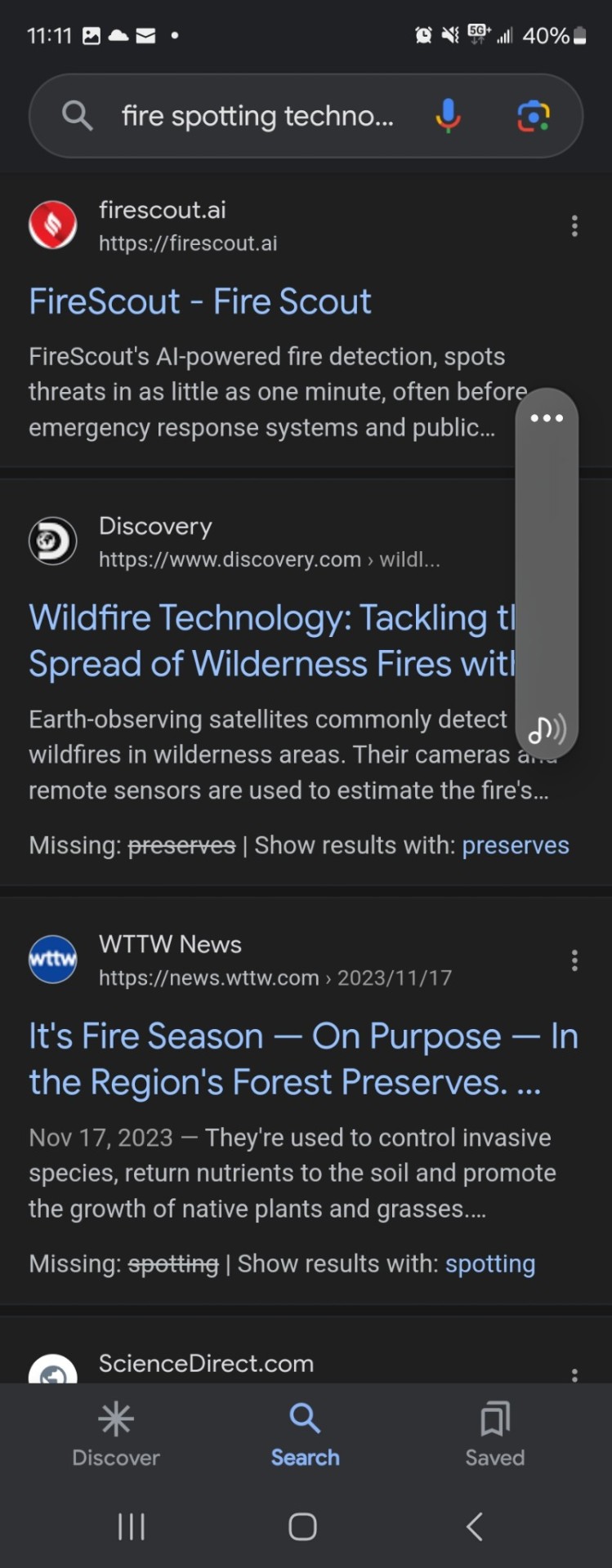
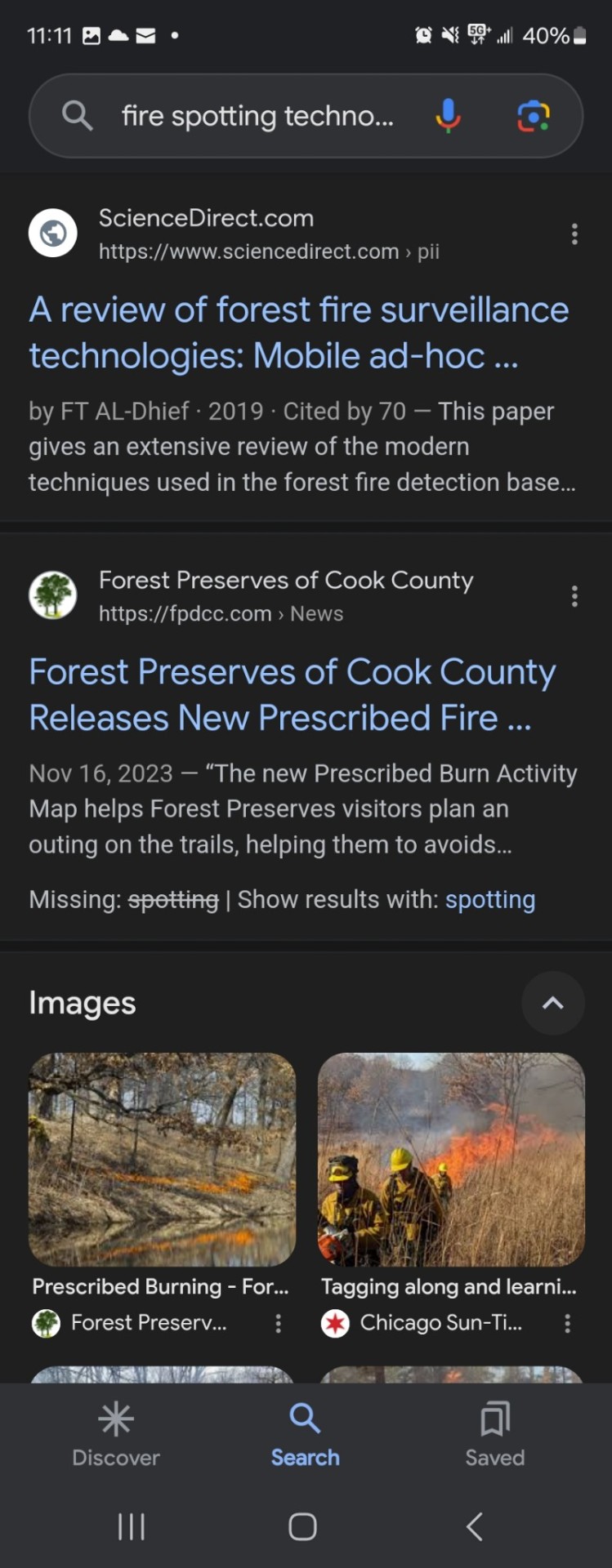



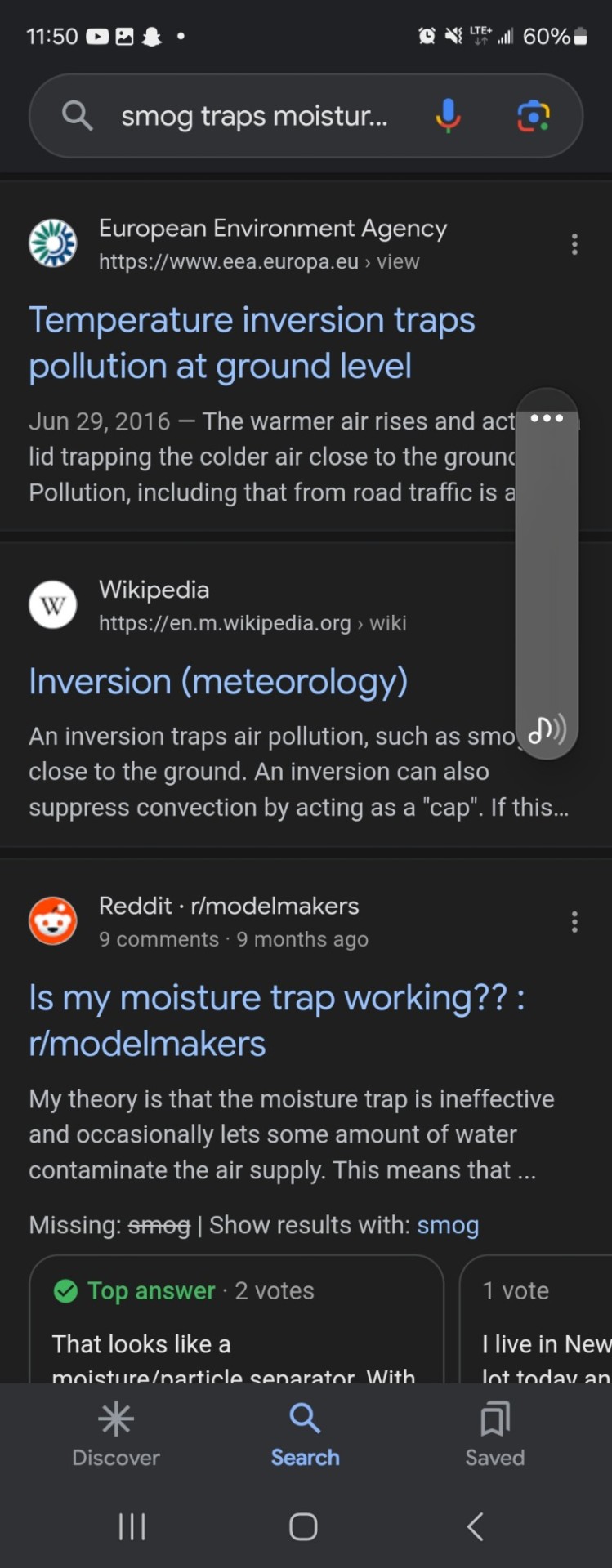

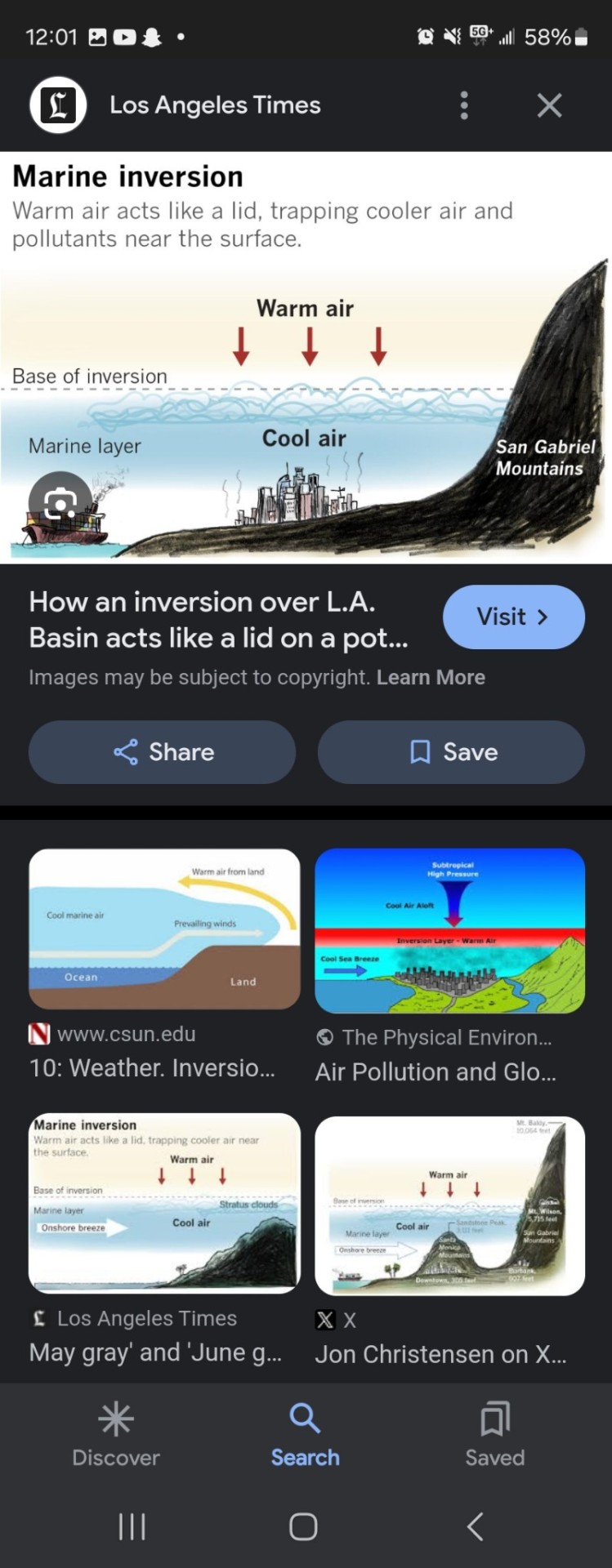


https://www.sltrib.com › 2022/02/09
What causes inversions in Salt Lake City? And what's behind ...
0 notes
Text
2024 A Remarkable Year for Animal Rights in America
Several laws, policies, and campaigns made significant progress in advancing the welfare and protection of animals
By Craig A. Fine, Esq.
March 21, 2024
“The year 2024 is a remarkable one for animal rights in America, as several laws, policies, and campaigns made significant progress in advancing the welfare and protection of animals. From farm animals to wildlife, from research animals to companion animals, here are some of the highlights and challenges of the past year.” Said Craig A. Fine, Esq.
One of the biggest victories for farm animals in 2024 was the U.S. Supreme Court's decision to uphold California's Proposition 12, widely considered the world's strongest law for the protection of farm animals. The law bans the extreme confinement of mother pigs, hens, and calves in California, and also prohibits the sale of products from animals raised in such conditions in other states. The law, which was approved by voters in 2018, faced several legal challenges from the pork industry, but the Supreme Court rejected them in June 2024, paving the way for its full implementation https://www.humanesociety.org/blog/good-news-start-2024-these-laws-are-now-place-help-animals.
Another milestone for farm animals was the approval of cultivated meat by the U.S. Department of Agriculture in March 2024, making the U.S. the second country in the world to allow the sale of meat grown from animal cells, after Singapore. The approval was hailed by animal advocates as a breakthrough for reducing animal suffering and environmental impact, as well as meeting the growing demand for meat alternatives https://animalcharityevaluators.org/blog/victories-for-animals-in-2023-and-our-hopes-for-2024/.
However, not all news was positive for farm animals in 2024. Several states, such as Arkansas, Montana, and Oklahoma, passed or proposed bills that aimed to restrict or ban the labeling of plant-based and cultivated products as "meat", claiming that they were misleading or confusing for consumers. These bills were seen by many as attempts to protect the interests of the animal agriculture industry and stifle the innovation and competition of the alternative protein sector https://sentientmedia.org/important-laws-for-animals/.
Wildlife also received some attention and support in 2024, as several initiatives and actions sought to protect and conserve wild animals and their habitats. In April 2024, President Biden announced a new plan to conserve 30% of U.S. lands and waters by 2030, as part of his broader agenda to combat climate change and biodiversity loss. The plan, dubbed "America the Beautiful", involved collaboration among federal, state, local, tribal, and private stakeholders, and aimed to restore and enhance the natural resources and ecosystems that support wildlife and human well-being https://www.nationalgeographic.com/animals/article/new-animal-welfare-laws.
In July 2024, the U.S. Fish and Wildlife Service announced that it would restore the endangered species status of gray wolves in the lower 48 states, reversing a controversial decision by the previous administration that removed federal protections for the animals in 2020. The agency cited new scientific evidence and public input that showed that gray wolves still faced significant threats from habitat loss, poaching, and conflicts with humans and livestock. The agency also pledged to work with state and tribal authorities to ensure the long-term recovery and management of the species.
However, wildlife also faced some challenges and threats in 2024, especially from the illegal trade and exploitation of wild animals and their parts. In September 2024, a major undercover investigation by the Humane Society International revealed the shocking scale and cruelty of the U.S. trophy hunting industry, which involved the killing of thousands of exotic animals, such as lions, tigers, bears, and zebras, in fenced enclosures for sport and entertainment. The investigation also exposed the loopholes and lack of oversight that allowed the import and export of trophies, skins, bones, and other products from these animals, fueling the global wildlife trafficking network.
Research animals also saw some progress and hope in 2024, as several laws and policies aimed to reduce or replace the use of animals in scientific experiments and testing. In January 2024, a first-of-its-kind law in Maryland required animal research facilities in the state to pay into a Human Relevant Research Fund, which provided grants to scientists working to develop non-animal methods, such as human organoids and computer models. The law, which was supported by animal rights groups and medical experts, was expected to save millions of animals from suffering and death, and also improve the quality and relevance of biomedical research.
In February 2024, Michigan became the 16th state to enact a law that ensured dogs and cats used in research facilities were given the opportunity to be adopted after their time in research had ended. The law, named "Teddy's Law" after a beagle who was rescued from a testing facility in 2019, was welcomed by animal advocates and rescue groups, who said that it gave a second chance to animals who had endured pain and trauma in the name of science.
However, research animals also faced some challenges and barriers in 2024, especially from the resistance and inertia of some institutions and industries that relied on animal testing. In October 2024, a coalition of animal rights groups filed a lawsuit against the U.S. Food and Drug Administration, alleging that the agency violated federal law by requiring unnecessary and cruel animal tests for COVID-19 vaccines and treatments. The groups claimed that the agency ignored the availability and validity of alternative methods that did not involve animals and that it wasted time, money, and lives in the process.
Companion animals also received some attention and support in 2024, as several initiatives and actions sought to improve the welfare and protection of pets and their owners. In March 2024, New York became the first state to ban the sale of dogs, cats, and rabbits in pet stores, to crack down on the puppy mill industry and to promote adoption from shelters and rescues. The law, which was applauded by animal advocates and humane societies, also provided financial assistance and incentives to pet stores that transitioned to a humane business model.
In June 2024, California passed a landmark law that required landlords to allow tenants to keep at least one pet in their rental units, as long as they paid a reasonable pet deposit and complied with the health and safety rules. The law, which was supported by animal welfare groups and housing advocates, aimed to prevent the discrimination and eviction of pet owners, and also reduce the number of animals surrendered to shelters due to housing issues.
However, companion animals also faced some challenges and threats in 2024, especially from the abuse and neglect of irresponsible or malicious owners. In August 2024, a nationwide investigation by the ASPCA revealed the shocking extent and severity of animal hoarding in the U.S., which involved the accumulation of large numbers of animals in unsanitary and overcrowded conditions. The investigation also exposed the lack of awareness and resources to address this complex and hidden problem, which affected the health and well-being of both animals and humans.
The year 2024 was a remarkable one for animal rights in America, as several laws, policies, and campaigns made significant progress in advancing the welfare and protection of animals. However, the year also showed that there were still many challenges and obstacles to overcome and that there was still much work to be done to achieve a more humane and compassionate world for all animals. As we approach 2025, we hope that the animal rights movement will continue to grow and succeed and that more people will join us in this noble and urgent cause.
ABOUT CRAIG ALBERT FINE, ESQ.

NOT LEGAL ADVICE
Links, media, and other information related to Attorney Craig Albert Fine (Craig Fine/ Craig A. Fine, Esq. and other variations as published) and information obtained related to Mr. Fine’s expertise pertaining to the housing markets, mortgage rates, landlord-tenant law, real estate prices and forecasts, budgeting before buying a home and countless other opinion pertaining to real estate, legal advice and legal strategy and other topics in which Craig Albert Fine is mentioned should not be misconstrued as legal advice. For legal advice please consult with the attorney of your choice.
CONTACT INFORMATION FOR CRAIG A. FINE, ESQ.
The Law Office of Craig A. Fine
Telephone: (718) 351-5190
Address: 159 New Dorp Plaza
Staten Island, NY 10306, USA
Website: https://craigafinelawoffice.com/
0 notes
Text
USDA invests $8 million in four partnerships to expand measurement and monitoring of soil carbon on working agricultural lands
The U.S. Department of Agriculture (USDA) is investing $8 million in four partnerships to support and expand measurement and monitoring of carbon in soil on working agricultural lands and to assess how climate-smart practices are affecting carbon sequestration. USDA’s Natural Resources Conservation Service (NRCS) will work with Iowa State University, Michigan State University, American Climate…
View On WordPress
0 notes
Text
Fwd: Postdoc: ORISE.WolfConservationGenomics
Begin forwarded message: > From: [email protected] > Subject: Postdoc: ORISE.WolfConservationGenomics > Date: 14 April 2023 at 06:39:15 BST > To: [email protected] > > > > A fellowship opportunity is available with the US Department of > Agriculture (USDA) Forest Service (USFS) located in Missoula, Montana > starting June 2023. Under the guidance of a mentor, the participant > will contribute to projects in collaboration with the USFS and Alaska > Department of Fish and Game using genomics tools to model the consequences > of inbreeding and management actions to recover genetic diversity for > wolves and other mammals. > > Qualifications > > The qualified candidate should have received a doctoral degree in one of > the relevant fields, or be currently pursuing the degree with completion > by May 31, 2023. > > * Training in evolutionary biology, conservation biology, genetics, > genomics, ecology bioinformatics and/or statistical genetics > * Familiarity with molecular tools such as whole genome resequencing > and population genetics would be useful > * Experience working with diverse, non-academic partners including > natural resource professionals working in state and Federal > government, non-governmental organizations, and tribal governments > * Desire to conduct scientifically-rigorous research with > conservation and management applications > > This opportunity is available to U.S. citizens, Lawful Permanent Residents > (LPR), and foreign nationals. Non-U.S. citizen applicants should refer to > the Guidelines for Non-U.S. Citizens Details page of the program website > for information about the valid immigration statuses that are acceptable > for program participation. This program, administered by ORAU through > its contract with the U.S. Department of Energy (DOE) to manage the > Oak Ridge Institute for Science and Education (ORISE), was established > through an interagency agreement between DOE and USFS. Applicants can > apply at the link below. > > https://ift.tt/NDpMY5O > > Please feel free to email Alex Fraik ([email protected]) with > any questions. > > > > "Fraik, Alexandra - FS, MT"
0 notes
Text
Conservation Innovation Supported by Significant Investment from USDA
Conservation Innovation Supported by Significant Investment from USDA
The U.S. Department of Agriculture’s (USDA) Natural Resources Conservation Service (NRCS) is investing up to $15 million to help support conservation innovation. The Conservation Innovation Grants (CIG) program helps farmers and landowners implement new tools, technologies, and practices for better natural resource conservation. All CIG proposals will need to be submitted by July 19. Non-federal…

View On WordPress
#Conservation Innovation Grants (CIG) program#Natural Resources Conservation Service (NRCS)#U.S. Department of Agriculture (USDA)
0 notes
Text
Farmers Say No To Proposed County Department of Agriculture
Farmers Say No To Proposed County Department of Agriculture

Maui County Farm Bureau Member Poll Rejects Proposed Charter Amendment
The Maui County Farm Bureau (MCFB) announced the results of a recent member poll to determine how their farmers felt about the proposed charter amendment to establish a County of Maui Department of Agriculture. The results revealed a strong objection to the proposal with 84% of farmers & ranchers responding saying NO to the…
View On WordPress
#American Farm Bureau Federation#Clark Hashimoto#County of Maui Department of Agriculture#Farm Service Agency#Farmers#Hashimoto Persimmon Products#Hawaii Farm Bureau Federation#Maui County#Maui County Council#Maui County Farm Bureau#Natural Resources Conservation Service#Soil and Water Conservation Districts#State Department of Agriculture#State Department of Health#Teena Rasmussen#U.S. Department of Agriculture#UH College of Tropical Agriculture#UH College of Tropical Agriculture and Human Resources#Yuki Lei Sugimura
0 notes
Text
Looking at White River Campground today, campers and day hikers using the Glacier Trail see a very orderly campground. There are paved road with marked parking spaces for motor vehicles to use. Each camp site has its own number with is own parking spur, tent pad, picnic table, and fire ring. All the camp sites are also spread out, providing each campsite with a bit space. Even the restrooms are spread throughout the campground so that no one has to travel too far for the amenities.
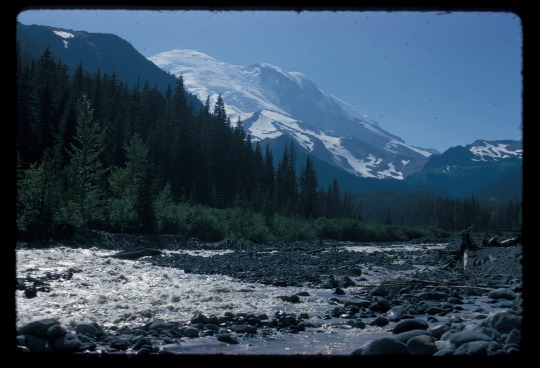
Hard to imagine that camping used to be much different. As car campgrounds were started in the national parks (and other public lands), there was little in the way of planning. In many campgrounds, you drove where you wanted, parked where you wanted, and set up your camp where you wanted. In popular campgrounds, many plants and trees were trampled to death. The very natural resources that people wanted to camp near where being destroyed.
Enter a plant pathologist working for the U.S. Department of Agriculture, E.P. Meinecke. Approached first by Yosemite National Park and eventually by the whole National Park Service (NPS), E.P. Meinecke studied why so many plants were dying in and around campgrounds. In 1932, he published his report “A Campground Policy”. It quickly became the bible on how to design a campground. Designated campsites of equal size, each site has a firepit or grill, with a table and tent pad, motor vehicles were to be confined to roads, and each campsite would have a spur for campers to park their cars. This was revolutionary and the NPS wanted to embrace it, but had little money to do so.
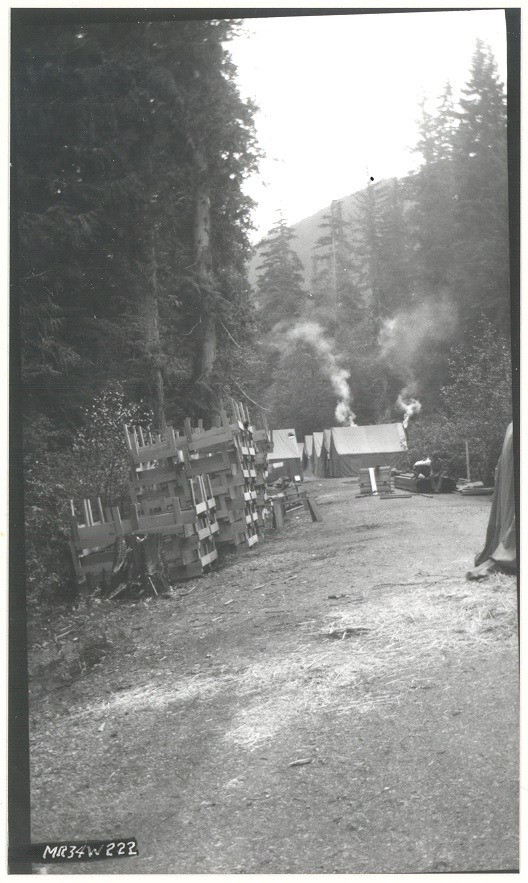
Enter the Civilian Conservation Corps (CCC). As federal agencies put folks back to work in the Great Depression of the 1930s, a sizeable amount of labor became available for national park projects. At Mount Rainier National Park, there were 6 CCC camps a summer for a few years. One CCC camp was at the White River Entrance. The CCC enrollees worked on many projects but for White River Campground, opened in 1923, a key project was rehabilitation following Meinecke’s principles from “A Campground Policy”. Eventually increased in size, White River Campground still follows some of those basic designs today. Have you camped in White River Campground and stayed in one of the campsites? Which is your favorite campsite in the campground? ~ams

For more information on the history and archaeology of the park, see https://www.nps.gov/mora/learn/historyculture/index.htm and https://www.nps.gov/mora/learn/historyculture/archaeology.htm
For more on campgrounds in the national park, see https://www.nps.gov/mora/planyourvisit/campgrounds.htm
NPS/Butts Photo. View of the White River and Mount Rainier from White River Campground. 1974. NPS Photo. Black and white image of dirt road and tents at White River CCC Camp in 1934. NPS/C. Roundtree Photo. White River and Mount Rainier from near the White River Campground in 2018.
#encuentra tu parque#find your park#mount rainier national park#mount rainier#history#campground#national parks
22 notes
·
View notes
Text
After the U.S. government started the largest wildfire in New Mexico's recorded history in April, it is asking victims to share recovery costs on private land, jeopardizing relief efforts, according to residents and state officials.
The blaze was sparked by U.S. Forest Service (USFS) prescribed fires to reduce wildfire risk. The burns went out of control after a series of missteps, torching 432 residences and over 530 square miles (1373 square km) of mostly privately owned forests and meadows, much of it held by members of centuries-old Indo-Hispano ranching communities.
"Today I'm announcing the federal government's covering 100% of the cost," President Joe Biden said during a visit to New Mexico in June. Biden was announcing a disaster declaration that covered debris removal and emergency protective measures.
But federal cost-sharing statutes on other federal relief programs are limiting Biden's authority and exposing holes in the government safety net meant to help survivors and restore landscapes.
It is a system more Americans will turn to as extreme fires and flooding become the climate change norm.
"I DIDN'T CAUSE THIS DAMN FIRE"
Biden's measure was meant to bridge FEMA relief and a congressional bill that may pass in the fall to provide 100% federal compensation for losses from the so-called Hermit's Peak Calf Canyon fire.
Daniel Encinias was among survivors who met Biden and was told by U.S. Department of Agriculture (USDA) officials he would get timely support at little or no cost.
He, his wife Lori, three teenage children, four dogs and eight cats are living in a camping trailer next to the ashes of their home in Tierra Monte, 35 miles northeast of Santa Fe.
Encinias submitted an application to the USDA's Natural Resources Conservation Service (NRCS) https://www.nrcs.usda.gov/wps/portal/nrcs/detail/nm/newsroom/releases/?cid=NRCSEPRD1923027 to fix his well, but was told to share 25% of costs based on a federal statute that could not be waived as it did not fall under Biden's declaration.
Encinias said he was told by NRCS officials his application would be considered in September and recovery work would begin six to 12 months thereafter if he was accepted
So like many fire survivors in this low-income area who have no insurance, the rancher and retired electrician did the work himself.
"Why the hell am I going to pay anything when I didn't cause this damn fire?" said Encinias, 55, as he fed his cattle hay he was forced to buy after his baler was torched.
An official for the NRCS' local office in Las Vegas, New Mexico, where Encinias applied for support directed questions to the national office. Officials there did not respond to requests for comment.
The White House did not respond to a request for comment.
UNCERTAIN TIMELINE FOR RECOVERY RELIEF
Many fire-hit families cannot afford sharing at least 25% of costs on the USDA's Emergency Forest Restoration Program (EFRP) https://www.fsa.usda.gov/Assets/USDA-FSA-Public/usdafiles/FactSheets/emergency_forest_restoration_program-fact_sheet.pdfwhich offers relief such as stabilization of burn areas prone to flash flooding, according to New Mexico State Forester Laura McCarthy. Residents sometimes own large areas of land passed down from 1800s Spanish-Mexican land grants while working blue-collar jobs.
"They're really struggling," said McCarthy.
That has left locals, state officials and federal agencies counting on cost shares to be dropped and passage of the congressional bill.
Democratic Representative Teresa Leger Fernandez sponsored the legislation which passed the House and will probably need help from Republicans in the Senate. The office of Senate minority leader Mitch McConnell did not immediately respond to a request for comment
Leger Fernandez is in talks with the USDA and White House on dropping cost shares and helped negotiate a waiver with the NRCS for flood mitigation work on private lands.
"The federal government burns your house down so they are responsible in my mind to pay 100% of the cost of rebuilding," said Leger Fernandez
Support cannot get to the 45-mile-long disaster https://www.yahoo.com/video/mountains-gone-grief-sacred-mexico-004919599.html area fast enough.
The blaze burned around 170 acres (68.8 hectares) of rancher Kenny Zamora's forest. His pastures in El Turquillo are covered with up to 2 feet of sludge after monsoon rains triggered debris flows on hillsides that no longer absorb water. The torrents have twice knocked down fences.
A retired employee of the USDA's Rural Development agency, Zamora applied for support from the USDA's Farms Service Agency (FSA) to feed his livestock.
The FSA office in Las Vegas told him he was not eligible. USDA officials told him the EFRP for the area has yet to be funded. He is paying for recovery work himself.
"If you don't have insurance you're pretty much on your own," said Zamora, 59, who like Encinias is considering joining a massive civil case that may be filed against the USFS.
The FSA Las Vegas office directed questions to State Executive Director Jonas Moya, who did not respond to a request for comment. The FSA's national office did not respond to requests for comment.
Climate change is worsening wildfires as ecosystems no longer have natural protections such as cooler nights to slow their spread. The destroyed landscapes are also less able to handle other disasters, such as floods https://www.fema.gov/sites/default/files/documents/fema_flood-after-fire_factsheet_nov20.pdf.
Two women and a man died after a flash flood swept through the burn scar northeast of Las Vegas on July 21.
In Tierra Monte, ash flows sent boulders tumbling below Encinias' trailer and drowned livestock.
FEMA has so far granted $4.2 million to 1,164 fire survivors, marking an average payout of $3,600. New Mexico Governor Michelle Lujan Grisham on Thursday said FEMA granted her request to extend Biden's declaration to residents who have suffered damage from flooding and debris flows in wildfire burn scars.
For now, Encinias' family is getting by on a $37,000 maximum payout from FEMA for the loss of their 5-bedroom home. They also lost eight acres of forest, farm machinery and cars.
"I'm hoping that finally something works out where it helps the people," said Encinias.
19 notes
·
View notes
Text

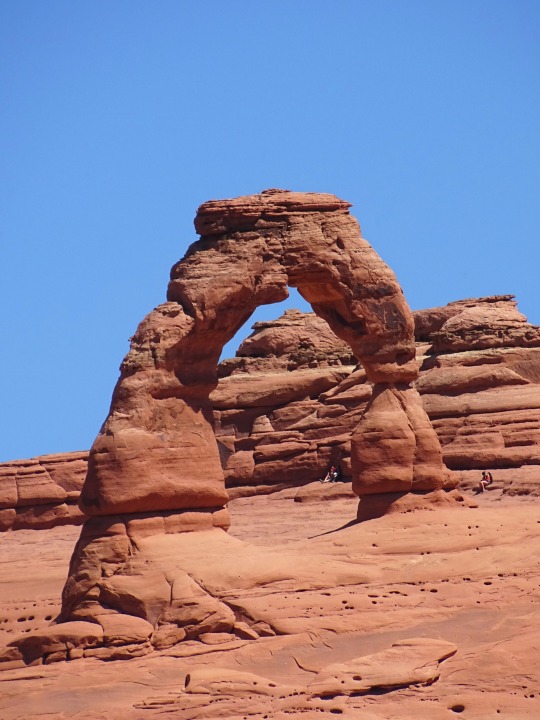
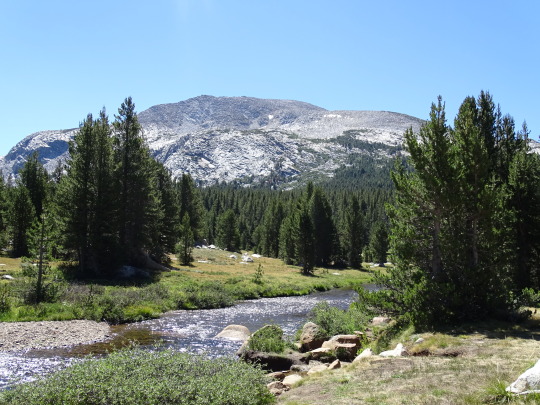



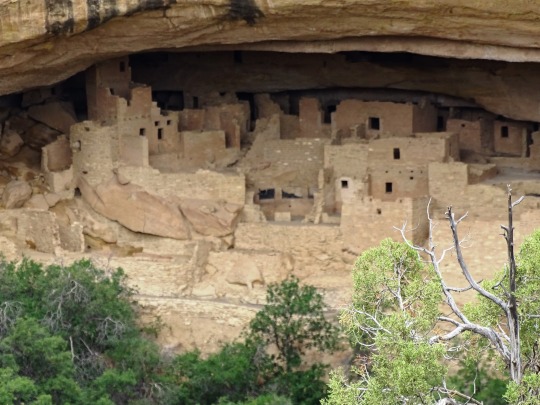

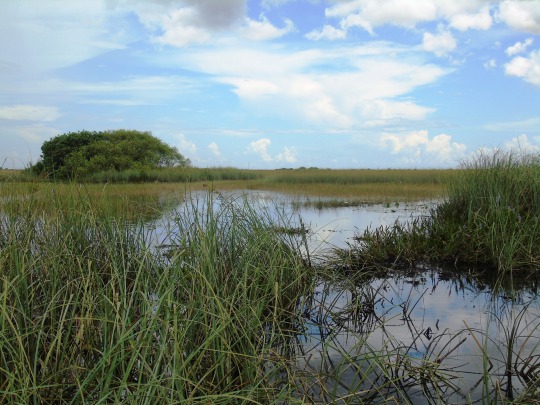

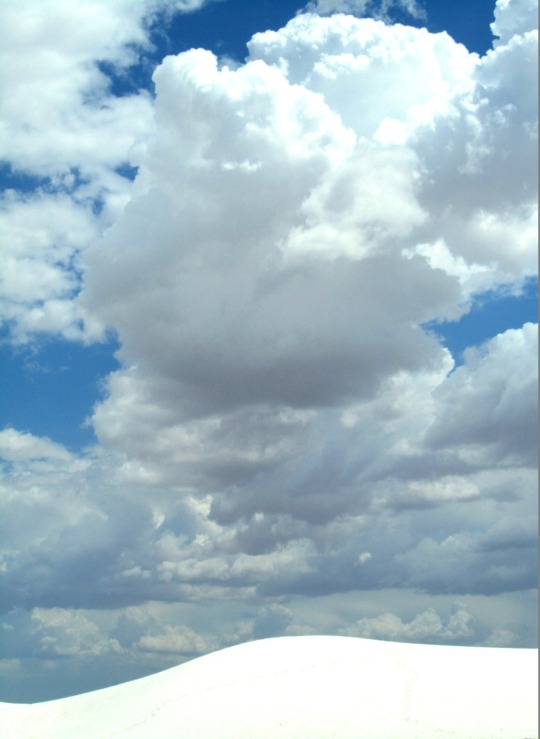

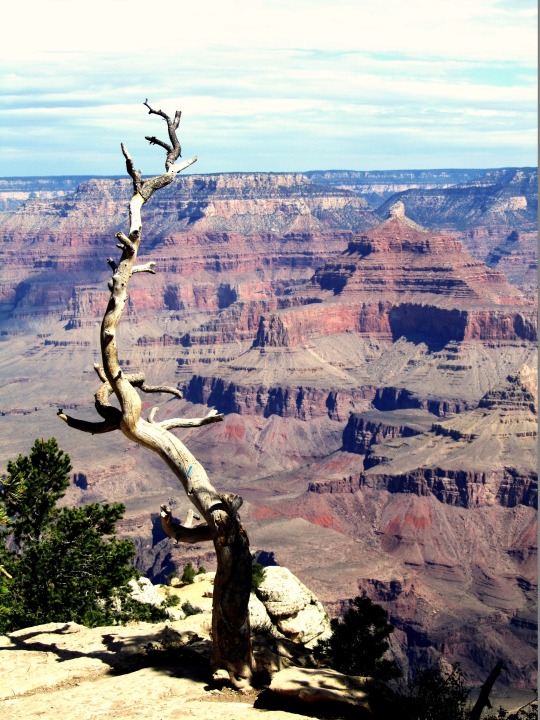


The United States National Park Service was created on August 25, 1916.
National Park Service Founders Day
The National Park Service was created when President Woodrow Wilson signed the Organic Act on August 25, 1916. The anniversary of its creation is known as National Park Service Founders Day, or simply as Founders Day, and is celebrated by all national parks. They offer free admission and host special programs, both in-person and virtual. The celebration happens to take place during National Parks Month.
According to the Organic Act, "the Service thus established shall promote and regulate the use of the Federal areas known as national parks, monuments and reservations" and their "purpose is to conserve the scenery and the natural and historic objects and the wild life therein and to provide for the enjoyment of the same in such manner and by such means as will leave them unimpaired for the enjoyment of future generations." This is not too far removed from the National Park Service's current mission statement: "The National Park Service preserves unimpaired the natural and cultural resources and values of the National Park System for the enjoyment, education, and inspiration of this and future generations. The Park Service cooperates with partners to extend the benefits of natural and cultural resource conservation and outdoor recreation throughout this country and the world." The National Park Service is a bureau in the U.S. Department of the Interior. It is led by a director who is nominated by the president and confirmed by the U.S. Senate.
The first national park was Yellowstone National Park. It was established on March 1, 1872, with the Yellowstone Act, "as a public park or pleasuring-ground for the benefit and enjoyment of the people." Yellowstone was administered by the U.S. Department of the Interior, as were other early parks and some monuments, while other monuments and historical areas were administered by the War Department and the Forest Service of the Department of Agriculture. When the National Park Service was created on today's date in 1916, it managed 35 parks and monuments. With an executive order in 1933, President Franklin Roosevelt brought 56 national monuments and military sites administered by the War Department and the Forest Service into the National Park Service. This move brought areas of historical, scenic, and scientific importance together. For a new park to be created, there must be an act of Congress. But, on account of the Antiquities Act of 1906, the president can proclaim national monuments on lands under federal jurisdiction.
By the 2020s, there were over 420 national park sites, or units, in the National Park System, covering over 85 million acres of land, located in every state, in the District of Columbia, and in a number of US territories. Collectively they are referred to as parks, although there are many naming designations, such as National Battlefields, National Military Parks, and National Historic Sites. There are also "related areas"—these are not managed by the National Park Service, but "are linked in importance and purpose to places managed directly by the National Park Service by preserving important segments of the nation's natural and cultural heritage." Examples are National Heritage Areas, Affiliated Areas, and trails in the National Trails System. The National Park Service employs about 20,000 people, and has almost 300,000 volunteers! With such an expanse of land in its jurisdiction and so many people involved in the land's preservation, it's apparent that the National Park Service's original goal of conservation for future generations is still being met, and this is celebrated today with National Park Service Founders Day!
How to Observe National Park Service Founders Day
There are numerous ways you could celebrate the day:
Visit a national park or other location managed by the National Park System. Remember, there is free admission today! If you can't visit in person, you could do so virtually.
Get the NPS app.
Check out the National Park Service's "Games and Challenges."
Read a book about the national parks.
Watch National Parks: America's Best Idea and read its companion book.
Learn about the past directors of the National Park Service.
Volunteer or work for the National Park Service.
Follow the National Park Service's social media accounts.
Source
#Skagway Historic District#United States National Park Service#25 August 1916#anniversary#US history#cityscape#architecture#landscape#tourist attraction#original photography#USA#National Park Service Founders Day#Arches National Park#Yosemite National Park#Canyonlands National Park#Mesa Verde National Park#Colorado National Monument#Dinosaur National Monument#Petrified Forest National Park#Acadia National Park#Everglades National Park#Grand Canyon National Park#Painted Desert#White Sands National Park#Gettysburg National Military Park#Mammoth Cave National Park#Olympic National Park
2 notes
·
View notes
Text
USDA: "Soil Your Undies”
Officials are encouraging people to “soil their undies”—but the suggestion is not as unseemly as it sounds. To help gauge the health of local soils, the U.S. Department of Agriculture recommends planting a pair of fresh cotton underpants 3 inches deep in the ground. Wait at least 60 days, then dig them up.
Healthy soil contains billions of microbes that will break down organic material like cotton, so the more holes-filled and threadbare your unearthed undies, the heartier your soil. And the heartier your soil, the bigger the role it can play in producing nutritious plants, reducing erosion and storing carbon. Source: The Nature Conservancy Magazine
Here’s the how-to:
Plant a pair of new, cotton underwear horizontally about 3 inches deep in the site you're curious about. Don't forget to mark the spot you planted!
Wait at least 60 days. This gives your soil microbes time to do their magic! Then dig the undies back up.
Share your results by sending us a photo of your "harvest" and a little info about your operation to [email protected].
Read more: USDA Natural Resources Conservation Service Oregon Soil Solutions The Nature Conservancy
The hungry microbes in your soil need food, shelter, and variety in order to thrive, just like us! You can take care of your microbial friends by following these four steps:
Avoid soil disturbance wherever and whenever possible.
Maximize soil cover with living plants and residue.
Maximize biodiversity by growing a variety of plants and managed integration of livestock.
Maximize living roots in the soil throughout the year. (Microbial action, USDA—NRCS)
16 notes
·
View notes
Link
Climate change appears to be high on the agenda for tech billionaires like Elon Musk, Jeff Bezos and Bill Gates but some are questioning whether they’re focusing their efforts on the right areas.
Broadly speaking, the three richest tech billionaires — who rank in the top five richest people on the planet — are all trying to develop new technologies that can reduce the world’s carbon dioxide emissions.
Musk is largely focused on funding carbon capture technologies, Gates is particularly bullish on nuclear energy, and Bezos has created a dedicated “Bezos Earth fund.” All of them believe that technology has a major role to play in tackling climate change and they’re doing their utmost to ensure they’re pushing the boundaries when it comes to climate tech.
“They basically think in the ‘Iron Man way,’ which is that we can build the technology to innovate ourselves out of it,” Christian Kroll, the founder and CEO of search engine Ecosia, told CNBC on a video call, adding that they should be focusing more on planting trees.
“No technology will ever get there,” he said in reference to trees. “And on top of that, you’re getting so many things for free. You’re getting fertile soil, you’re doing something against the biodiversity crisis, and you’re helping the water cycle so you have less droughts and less floods.”
Global carbon dioxide emissions have soared over the last 100 years, leading to unprecedented global warming and climate change.
It’s widely known that trees are among the most efficient carbon-capture machines on earth. They remove carbon dioxide from the atmosphere through a chemical reaction known as photosynthesis where they turn the gas into energy that they use to grow. Empress trees, for example, can absorb about 103 tons of carbon a year per acre.
Twelve of the top 20 climate solutions relate to either agriculture or forests, according to climate non-profit Project Drawdown, which is based in San Francisco.
Last week, Britain’s Prince William underscored the importance of investing in nature to tackle climate change and protect our planet.
“We must invest in nature through reforestation, sustainable agriculture, and supporting healthy oceans, because doing so is one of the most cost effective and impactful ways of tackling climate change,” he said.
“It removes carbon from the atmosphere, helps build more resilient communities, tackles biodiversity loss, and protects people’s livelihoods. This is crucial if our children and grandchildren are to live sustainably on our precious planet.”
Jack Kelly, the founder of Open Climate Fix and a former researcher at Alphabet-owned AI lab DeepMind, told CNBC that a mix of approaches is required. “I think we need a wide range of interventions, both tech and reforestation,” he said. Open Climate Fix announced Tuesday that it has raised over £500,000 ($689,000) from Google.
Dave Waltham, a professor in the Department of Earth Sciences at Royal Holloway, University of London, told CNBC that “natural climate solutions” like tree planting can be viewed as “emergency first aid.”
“They buy us time to develop permanent solutions,” he said. “New forests, for example, absorb CO2 for 40 years or so and then reach an equilibrium. Buying time this way is immensely valuable as we still cannot produce completely climate-neutral food, steel, energy, and concrete.”
Trees and reforestation, however, are relatively low down on the tech billionaire agenda list, according to Kroll.
While the tech billionaires wouldn’t necessarily be able to “solve” climate change by planting more trees, they could have a “massive impact” if they dedicated more of their capital to the matter, he said.
According to the Bloomberg Billionaire Index, Amazon founder Bezos is worth $197 billion, Tesla founder Musk is worth $181 billion, and Microsoft founder Gates is worth $145 billion.
Representatives for Musk and Gates did not immediately respond to CNBC’s request for comment, while a representative for Bezos declined to comment.
Forests or fusion?
There’s no denying that tech billionaires are becoming increasingly interested in climate change.
In January, Tesla CEO Musk pledged to invest $100 million in new carbon capture technologies. Carbon capture is the process of trapping waste carbon dioxide either directly from the air, or just before it gets emitted from factories and power plants.
His investment in new carbon capture technologies dwarfs the $1 million he spent on trees in 2019 when he gave YouTuber Jimmy “MrBeast” Donaldson a donation to help him reach a $20 million tree planting target.
Musk’s stance on climate change is complicated, however. While he runs a relatively green electric vehicle company, he has also been criticized for his love of bitcoin, which is now one of the world’s biggest CO2 emitters.
Meanwhile, Gates thinks nuclear energy is the future and his TerraPower company, which he founded in 2008, is aiming to build a fully functional advanced nuclear reactor.
In his new book “How to avoid a climate disaster,” Gates doesn’t seem to be convinced that trees are worth investing in.
“It has obvious appeal for those of us who love trees, but it opens up a very complicated subject ... its effect on climate change appears to be overblown,” he writes.
Gates argues that the most effective reforestation strategy is to stop cutting down so many of the trees we already have and says that “you’d need somewhere around 50 acres’ worth of trees planted in tropical areas to absorb the emissions produced by an average American in their lifetime.”
The Microsoft mogul clarified his stance on trees in a podcast interview with New York Times journalist Kara Swisher in February.
“If you’re going to fund for 10,000 years constantly replanting it, then that’s a legitimate offset,” said Gates. “If you’re just planting one generation of trees, it doesn’t get you much. You know, I’m not saying it’s a mistake or anything. But that will not make a significant dent in this problem.”
Gates, who is now the largest owner of farmland in the U.S., added: “The idea that there’s a place to plant a trillion trees, that’s just wrong.”
Elsewhere, Bezos created the $10 billion Bezos Earth Fund last February to provide financial support to scientists, non-governmental organizations, activists and the private sector.
So far, the Bezos Earth Fund has issued grants to several organizations that focus on reforestation including Eden Reforestation Projects, The Nature Conservancy, and The Natural Resources Defense Council.
Amazon, however, has been criticized for increasing pollution with its planes and vans, and for using excessive amounts of cardboard when packaging its products. Amazon says that its packaging is 100% renewable and that it doesn’t use plastic clamshells and wire ties.
Amazon Web Services, the company’s cloud computing behemoth, and Microsoft also operate energy intensive data centers around the world.
Turning profits in plants
But Kroll thinks the tech billionaires are still relatively “obsessed” with dreaming up new technologies to take on the problem.
His company, Ecosia, has made tree planting a major part of its identity.
Headquartered in Berlin, Ecosia donates 80% of its profits to charities that focus on reforestation. Essentially, if a person goes on the Ecosia search engine and performs a search, almost all of the money that the company makes from digital ads will be used to plant trees.
The company has partnered with over 60 tree planting organizations who have planted over 123 million trees, Kroll said, adding that they’re mostly in developing countries in the tropics.
“Through our tree planting, each search is removing around 1kg of CO2 from the atmosphere,” said Kroll. “I’m doing dozens of searches every day so thousands of searches every year. That’s a few tons of CO2 removed from the atmosphere just by searching.”
Kroll suggested that people should only be classed as billionaires when they remove a billion tons of CO2 from the atmosphere.
“All the others are just dollar billionaires,” he said. “That’s boring. We don’t need that in a 21st century anymore.
#jeff bezos#Elon Musk#Bill Gates#Is not a fucking Scientist#But is a Dumbass#Climate Change#Ecosia#New Search Engine Helping To Plant Trees
17 notes
·
View notes